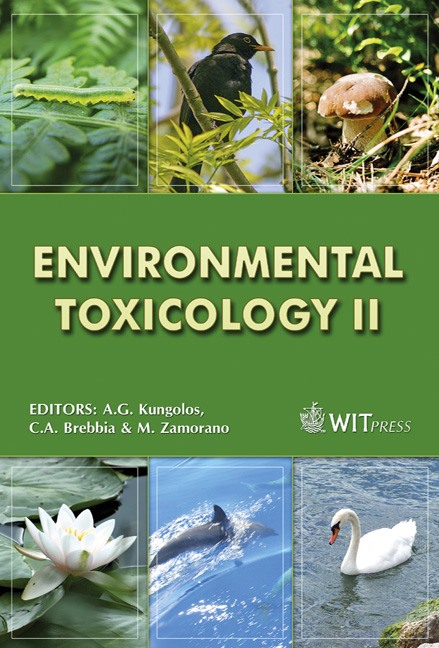Surface Water Toxicity Assessment By Ecotoxicological And In Vitro Toxicologocical Assays
Price
Free (open access)
Transaction
Volume
110
Pages
10
Page Range
253 - 262
Published
2008
Size
369 kb
Paper DOI
10.2495/ETOX080271
Copyright
WIT Press
Author(s)
C. Khalil & C. Winder
Abstract
Environmental pollution is an ever-growing problem in today’s consumer world. Disposal of chemicals and their unwanted by-products into the natural environment poses significant risks to ecosystems and human health. The receiving natural environment is a sink to chemical mixtures and this triggers a range of potential environmental and health problems. It is therefore imperative to develop rapid reliable techniques for initial screening and establishment of toxic potential and risks. The selection of the catchment study locations in Tasmania (creeks stream and rivers) was the result of recorded observations following rainfall of anomalous oyster population mortality and adverse human health in the geographical catchment area. A biological impact was identified in the study area but the casual agents and environmental triggers were unclear hence the need for in vitro toxicology assessment techniques for identifying the triggers and risks associated with exposure to environmental contaminants. The aim of this paper is to present findings of in vitro cytotoxicity assays and their potential in assessing contaminated river water toxicity using human cell cultures. The key to the approach adopted was to investigate exposure to the environmental pollutants and generate human toxicity profiles with a high degree of confidence using cell viability and damage as end points. Furthermore, correlation of the toxicity results using human cell cultures as ecological receptors in the study area clearly indicated the usefulness of and sensitivity of human-derived cells in detecting the toxicity of unknown chemical mixtures. Keywords: water samples, human skin cells, human skin fibroblasts, HepG2, A549, toxicity, cytotoxicity, ecotoxicity, MTS, sea urchin development test, bivalve larval development test.
Keywords
water samples, human skin cells, human skin fibroblasts, HepG2,A549, toxicity, cytotoxicity, ecotoxicity, MTS, sea urchin development test,bivalve larval development test.





